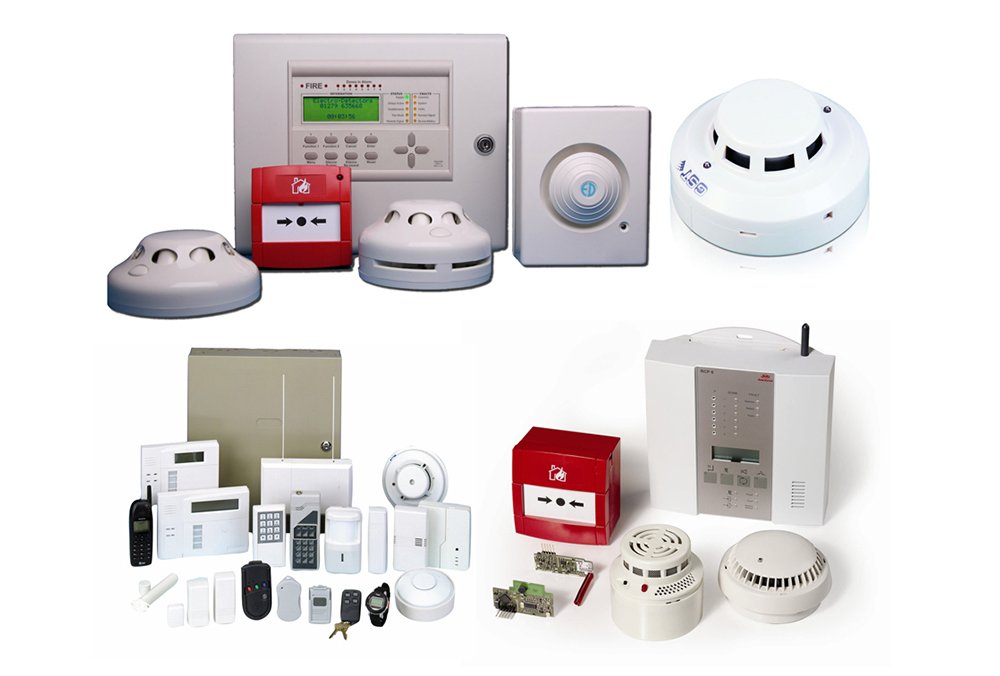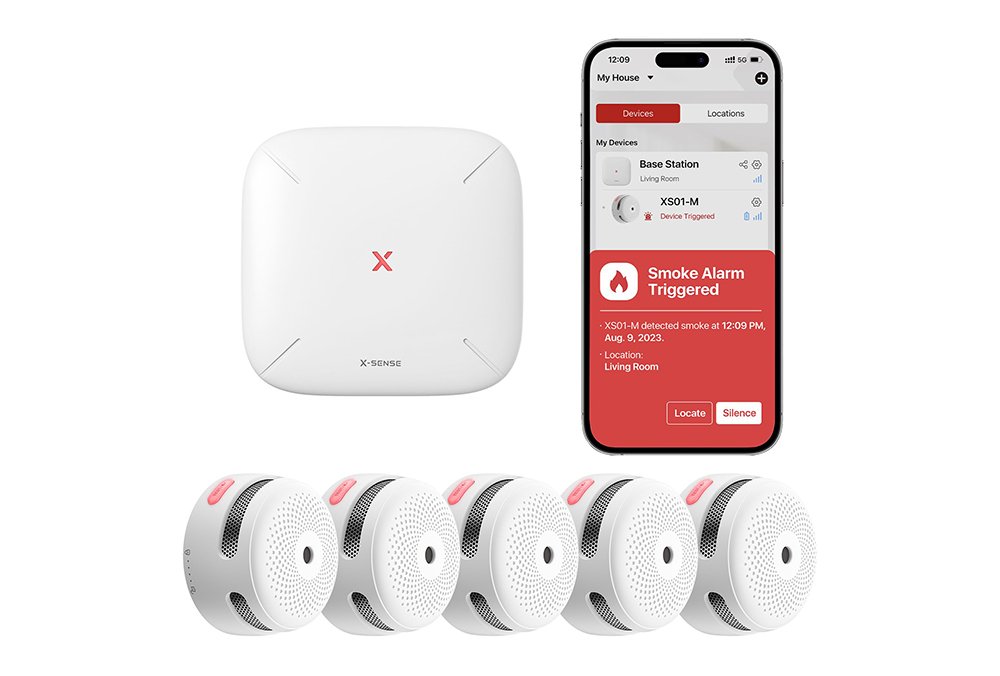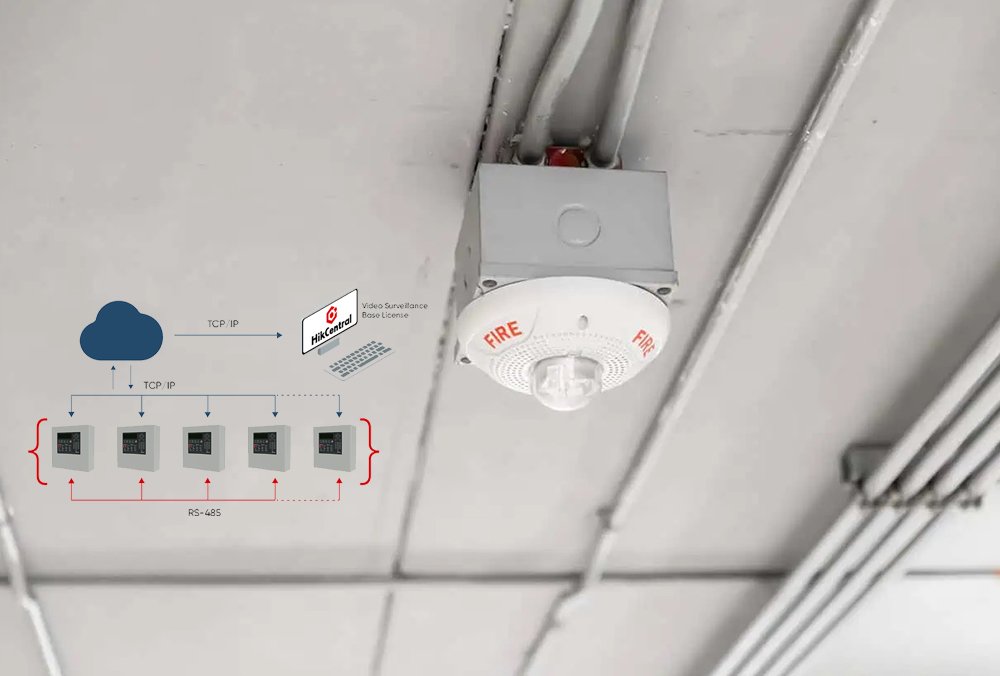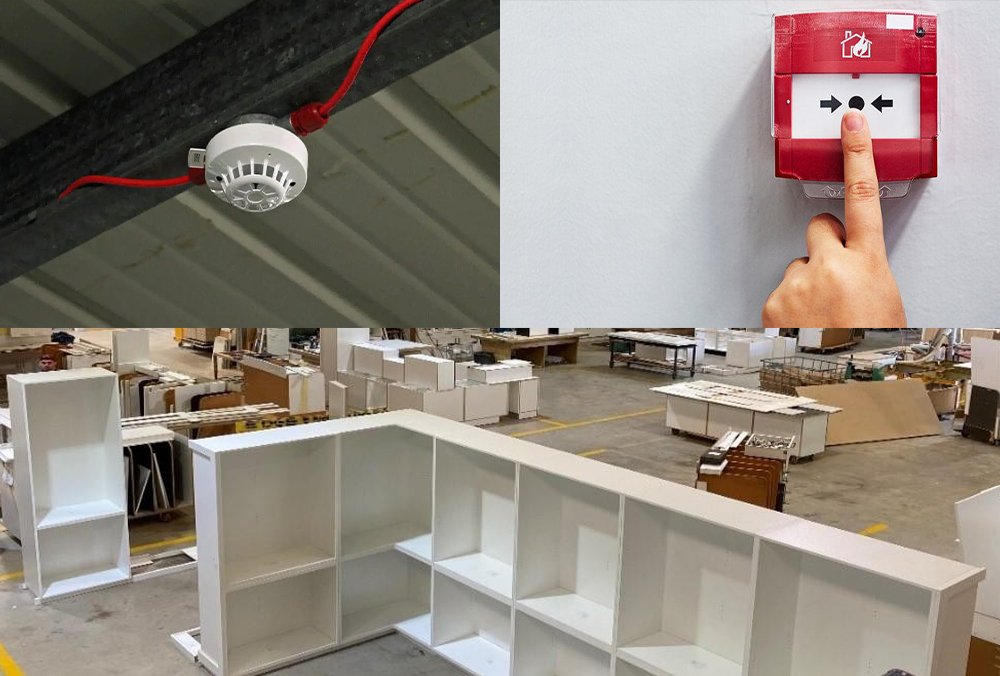FIRE ALARM SYSTEMS
Our Fire Alarm Systems

Conventional Fire Alarm Systems

Addressable Fire Alarm Systems

Wireless Fire Alarm Systems
Definition
A conventional fire alarm system is a basic type of electronic fire detection system that divides a building into broad zones. In these systems, multiple detectors and call points are wired to the fire alarm control panel in zones, with each zone being identified by a number or area name. When a detector is triggered, the control panel identifies the zone but not the exact device or location within that zone.
Components
- Control Panel
– The brain of the system
– Monitors inputs and controls outputs
– Displays zone information
– Houses the power supply
- Detection Devices
– Smoke detectors
– Heat detectors
– Manual call points/pull stations
– Each device connects directly to the control panel through dedicated wiring
- Alerting Devices
– Bells
– Horns
– Strobes
– Sounders
Example Setup
Consider a two-story office building:
– Zone 1: Ground Floor – Office Area
– Zone 2: Ground Floor – Kitchen and Break Room
– Zone 3: First Floor – Meeting Rooms
– Zone 4: First Floor – Open Office Space
If a fire starts in the kitchen, the system would indicate “Zone 2” is in alarm, directing responders to the general area but not the specific location within that zone.
Use Cases
Best Suited For:
- Small to Medium Buildings
– Retail shops
– Small offices
– Schools
– Warehouses
- Simple Layout Structures
– Buildings with clearly defined areas
– Facilities requiring basic fire detection
– Properties with straightforward evacuation routes
- Budget-Conscious Applications
– When cost is a primary consideration
– Where addressable – systems would be unnecessary
Retrofit installations in older buildings
Advantages:
– Lower initial cost
– Simpler installation
– Easier maintenance
– Less complex training required
– Reliable and robust technology
Limitations:
– Cannot identify specific detector location
– Less precise for large buildings
– Limited programming options
– Higher wiring requirements per zone
This system remains popular in smaller installations where budget constraints exist and precise location information isn’t critical for emergency response.
Definition:
An Addressable Fire Alarm System is an intelligent fire detection and alarm system where each connected device (detector, manual call point, or module) has a unique digital address. This allows the main control panel to precisely identify which specific device has been activated and its exact location within a building. Unlike conventional systems that only indicate zones, addressable systems provide device-level precision.
Key Components:
1. Fire Alarm Control Panel (FACP)
– Central processing unit
– Monitors all devices
– Stores programming and system configuration
– Displays device status and alerts
2. Addressable Devices
– Smoke detectors
– Heat detectors
– Manual call points
– Input/output modules
– Sounders and beacons
3. Communication Loop
– Digital communication circuit
– Connects all devices to the control panel
– Supports two-way communication
Example:
Consider a 10-story office building with multiple zones:
– Device 001: Smoke detector in Reception Area, Ground Floor
– Device 002: Manual call point near Emergency Exit, Ground Floor
– Device 045: Heat detector in Server Room, 5th Floor
– Device 126: Smoke detector in Conference Room A, 10th Floor
When device 045 detects high temperature:
1. The control panel immediately identifies the exact device and location
2. System displays: “ALERT – Heat Detector – Server Room – 5th Floor”
3. Appropriate response protocols are automatically initiated
Use Cases:
1. Large Commercial Buildings
– Office complexes
– Shopping malls
– Hotels
Benefits:
– Precise location identification
– Reduced response time
– Easier maintenance tracking
2. Healthcare Facilities
– Hospitals
– Nursing homes
– Medical centers
Benefits:
– Quick evacuation planning
– Targeted emergency response
– Minimized false alarms
3. Educational Institutions – Universities
– Schools
– Libraries
Benefits:
– Zone-specific alerts
– Efficient maintenance
– Detailed event logging
4. Industrial Facilities
– Factories
– Warehouses
– Production plants
Benefits:
– Early detection
– Specific area monitoring
– Integration with other safety systems
Advantages:
1. Precise device identification
2. Reduced false alarms through intelligent verification
3. Enhanced maintenance capabilities
4. Historical data logging
5. Remote monitoring possibilities
6. Scalability and flexibility
7. Integration with building management systems
This system type is particularly valuable in large, complex buildings where knowing the exact location of a fire incident is crucial for quick response and efficient evacuation. The initial cost may be higher than conventional systems, but the benefits in terms of safety, maintenance, and long-term operation often justify the investment.
Understanding Wireless Fire Alarm Systems
Definition
A wireless fire alarm system is a network of interconnected fire detection devices that communicate with a central control panel through radio frequency signals instead of traditional wired connections. These systems include smoke detectors, heat detectors, manual call points, and notification devices that form a comprehensive fire safety network without the need for physical wiring.
Key Components
1. Control Panel
– Acts as the system’s brain
– Receives and processes signals from all devices
– Manages system configuration and monitoring
– Initiates alarm responses
2. Detection Devices
– Wireless smoke detectors
– Heat sensors
– Carbon monoxide detectors
– Manual call points/pull stations
– Multi-sensor detectors
3. Notification Devices
– Wireless sounders
– Strobe lights
– Combined audio-visual devices
– Mobile notifications (in modern systems)
Examples
Basic Residential System
– 4-5 wireless smoke detectors
– 1 control panel
– 2-3 sounders
Smartphone integration
Commercial Installation
– Multiple smoke and heat detectors per floor
– Manual call points at exit routes
– Zone-based notification systems
– Emergency lighting integration
– Remote monitoring capabilities
Use Cases
Historic Buildings
– Preserves architectural integrity
– No need for drilling or cable installation
– Minimal visual impact
– Easy to upgrade or modify
2. Temporary Structures
– Construction sites
– Exhibition halls
– Pop-up venues
– Temporary events
3. Remote Facilities
– Warehouses
– Storage units
– Isolated buildings
– Areas with limited infrastructure
4. Retrofit Projects
– Existing buildings requiring system upgrades
– Buildings where wiring installation is difficult
– Cost-effective alternative to wired systems
– Minimal business disruption during installation
Advantages
– Quick installation
– Flexible system design
– Easy to expand or modify
– Lower installation costs
– Minimal structural damage
– Reliable batter
Our Realizations

Commercial Complex, Port Louis

Hotel Resort, Flic en Flac

Industrial Facility, Phoenix
Contact Us
Ready to enhance your security? Get in touch with our experts today!
